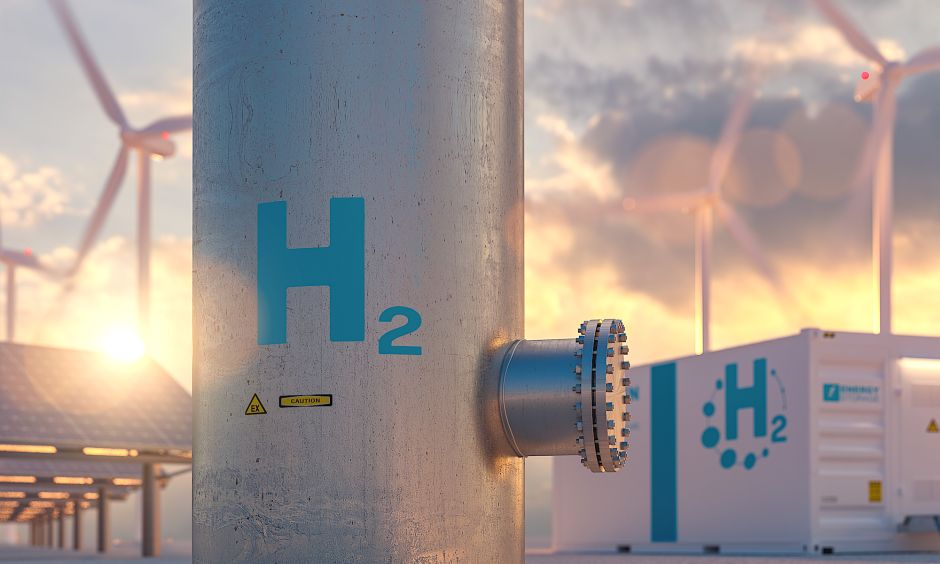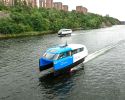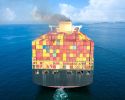Calculating Tool to Help Ports Transition

A new pre-study from Lighthouse has structured the various types of data needed to assess ports' current and future energy needs. In a larger follow-up project, this will be further developed into a calculation tool that aims to help Swedish ports become fossil-free energy hubs.
The role of ports is changing. Once seen merely as a gateway to shipping, they are increasingly regarded as a hub for various modes of transportation and are expected to take on the role of energy hubs that supply energy to both their own internal systems (e.g., cranes, forklifts) and external users such as road vehicles and ships. Ports also have the potential to produce and store renewable energy, such as wind and solar power.
"There are over 50 ports in Sweden. Most are quite small and generally lack the resources to initiate the transition process on their own. Our goal is therefore to develop a tool that can help them along the way," says Jessica Wehner, a researcher at VTI who has led the work on the pre-study Port as Energy Hub: Estimating Electricity Demand.
For the ports, it is about understanding how much energy they need today and how much they will need in the future. In the pre-study, Landskrona Port was used as a case study.
"The port has good insight into its own energy consumption in terms of electricity and diesel on an annual basis, meaning what appears on its electricity bill and diesel consumption. However, they lack information about what external actors, such as trucks entering the area or ships calling at the port, consume or need to consume, for example regarding shore power."
Therefore, Landskrona Port reached out to companies located in the port area regarding truck traffic, while shipping companies were contacted about vessels calling at the port. A dialogue was also initiated with Landskrona Energi about future energy supply in an electrified port.
"It is a significant challenge to rely on other actors. Certain information, such as the number of port calls or the number of trucks entering the port, was easier for the port to capture, while other information, such as the length of stay in the port, was not as readily available," says Jessica Wehner and continues:
"It would certainly be fantastic to include exact data from all actors, but the most important thing is, of course, for the port to start with its own operations and have the opportunity to analyze them."
During the project, a structure was developed to evaluate five areas: port operations, surrounding transport systems, the port's role as an energy node, additional energy activities, and the port's future energy plans. However, several of these areas need improvement and refinement, which will take place in the follow-up project "The Port as an Energy Hub: Development of an Energy Transition Tool for Ports," which is part of the Swedish Transport Administration's industry program Sustainable Shipping, run by Lighthouse. The idea is to further develop the established structure into a calculation tool to help Swedish ports become fossil-free energy hubs.
"We need to look more closely at fuels, which are currently being used and which will be used in the future, and develop values for that. Then, it will also be important to test the usability and applicability of the calculation tool," says Jessica Wehner.
The final report of the pre-study Port as an Energy Hub - A Pre-Study on Estimating Electricity Demand has been authored by: Jessica Wehner; VTI, David Daniels, VTI, Vendela Santén, RISE, Sara Rogerson, RISE, and Andreas Bach, RISE.
Project partners include: Landskrona Hamn AB and Landskrona Energi AB.
-
 DNV: Metanol är ett moget alternativt bränsle
DNV: Metanol är ett moget alternativt bränsle -
 Se Hållbar sjöfarts uppsamlingsheat
Se Hållbar sjöfarts uppsamlingsheat -
 NextWave – en podd som ska locka unga
NextWave – en podd som ska locka unga -
 Ny studie: Eldrivna pendelbåtar kan effektivisera Stockholms kollektivtrafik
Ny studie: Eldrivna pendelbåtar kan effektivisera Stockholms kollektivtrafik -
 Sjöfartens utsläpp ökar
Sjöfartens utsläpp ökar -
 Sociala relationer påverkar val av bränsle
Sociala relationer påverkar val av bränsle -
 Sjöfartens omställning kräver ”mjukare” påtryckningar
Sjöfartens omställning kräver ”mjukare” påtryckningar -
 Hon hade avtalad tid med Kapten ynkrygg
Hon hade avtalad tid med Kapten ynkrygg -
 Lighthouse omvärldsanalys 2025 – osäkerhet och tullar präglar sjöfarten
Lighthouse omvärldsanalys 2025 – osäkerhet och tullar präglar sjöfarten -
 Se seminariet Shipping in the Marine Environment
Se seminariet Shipping in the Marine Environment

